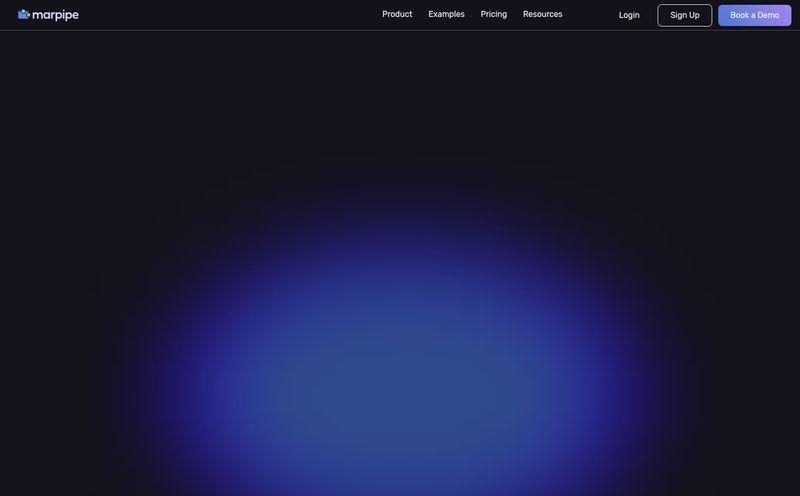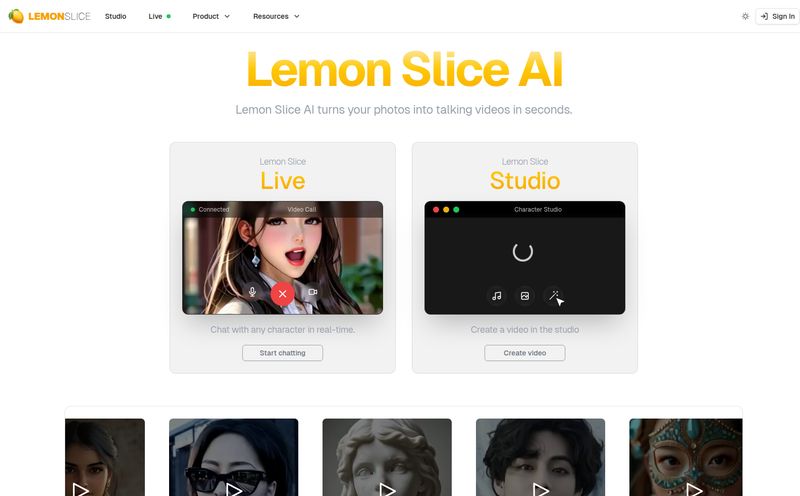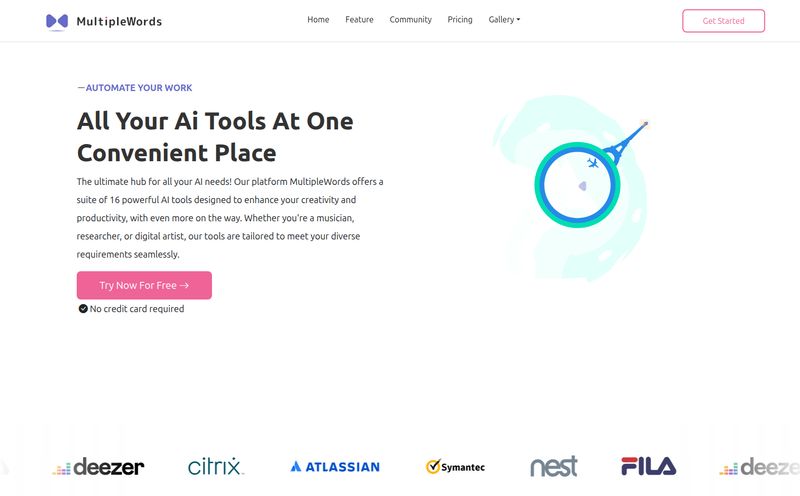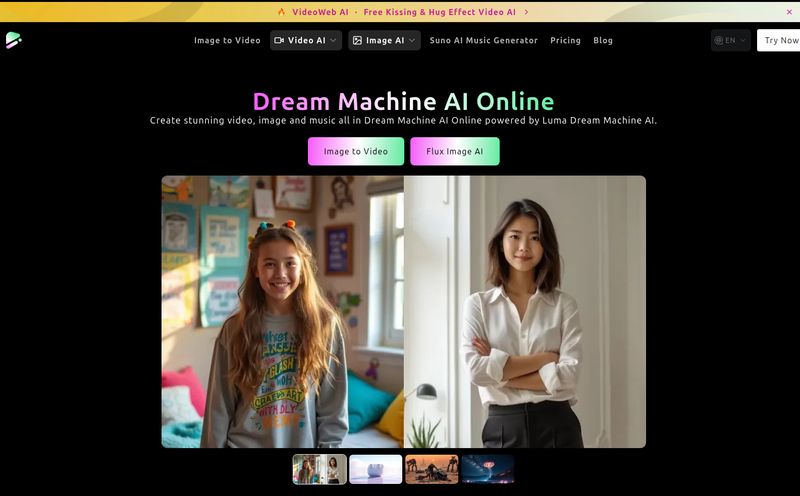For years, creating professional-looking video has been... a process. You know the drill. Lugging around a DSLR, fiddling with lighting kits that could illuminate a small moon, begging a friend to hold a boom mic, and then spending what feels like a geological epoch staring at a timeline in Premiere Pro. It’s expensive, it’s complicated, and frankly, it's a huge barrier for a lot of us.
So when a tool comes along that claims to give you studio-quality video, remotely, with just a phone... my cynical SEO-brain perks up. I’ve seen a lot of tools promise the world and deliver a grainy, out-of-sync GIF. But I gotta admit, Roll.ai has me paying attention. It’s making some big promises about being the future of video production. But is it just hype, or is it the real deal?
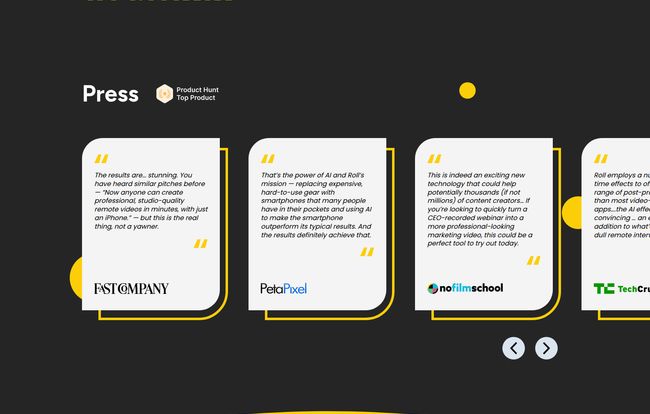
Visit Roll
So, What on Earth is Roll?
Imagine you could send a professional film crew to anyone, anywhere in the world, and all they needed was their smartphone. That's the elevator pitch for Roll. It’s an AI-powered platform that lets you direct and record high-quality remote video sessions. Think of it less like a simple screen recorder and more like an AI director in your pocket.
It's designed to solve that classic problem: you need a crisp, well-shot video of a client for a testimonial, an expert for a webinar, or a team member for a company announcement, but they're hundreds of miles away. Instead of settling for a fuzzy Zoom recording, Roll uses their phone's powerful camera and its own AI smarts to capture footage that looks polished and professional. It’s like giving their iPhone a film school education, on the fly.
The AI Magic Behind The Curtain
This isn't just about hitting 'record.' The platform is packed with features that genuinely impressed me, and they're clearly targeting the pain points most creators face.
Your Phone is Now a Pro Camera Rig
This is the core of it all. Roll's AI can create dynamic camera movements without anyone physically moving the phone. We're talking smooth pans, dollies, and crane shots, all generated by the software. They’re even using the hashtag #ShotoniPhone, which is a bold move, but from what I've seen, it's not entirely unearned. The AI also handles things like Lighting Detection and applying a Cinematic Bokeh effect (that blurry background look) to make the subject pop. Its one of those things that sounds like a gimmick until you see it in action.
The AI Director That Never Sleeps
Post-production is where most video projects go to die. The sheer volume of footage, the endless cuts, the color grading... it’s a grind. Roll’s big sell is its automated AI editing. The system can analyze the conversation, identify the best takes, and assemble a draft for you. It's not going to replace a seasoned human editor for a feature film, but for creating great-looking social clips, webinar segments, or testimonials? It’s a massive time-saver. It even includes VFX Camera Effects to add a little extra flair right from the get-go.
Let's Talk Money: Roll's Pricing Plans
Okay, the part everyone's waiting for. Is it going to cost an arm and a leg? Surprisingly, no. The pricing structure seems pretty fair and scalable, which I appreciate.
| Plan | Price | Key Features |
|---|---|---|
| Free | $0 | 2 hrs/month recording, all core AI features, Host-Only editing. Great for trying it out. |
| Creator | $49/user/month | 3 hrs/month recording, removes watermark. This feels like the sweet spot for solo creators and small businesses. |
| Pro | $199/user/month | 10 hrs/month recording, 3 additional editors, and unlocks Live Streaming. For small teams with higher video output. |
| Enterprise | Custom | Custom plans with dedicated support, screen management, and more. For the big players. |
The fact that there's a generous Free plan is a huge win. It lets you kick the tires and see if the AI-driven workflow actually fits your style before you commit any cash. For my money, the Creator plan is probably where most people will land. The watermark removal is pretty much essential for professional use.
The Good, The Bad, and The AI
No tool is perfect, especially one leaning so heavily on new technology. Here’s my breakdown of where Roll shines and where you might want to pause and consider your needs.
What I'm Genuinely Excited About
The sheer accessibility is off the charts. The idea that you can create studio-quality video content without a studio is a game-changer for bootstrapped startups, solo creators, and marketers on a tight budget. The cost-effectiveness is a close second. A single professional video shoot can run you thousands. A monthly subscription to Roll is a tiny fraction of that. And honestly, the speed. Getting a high-quality, edited draft back in minutes instead of days changes the entire content creation cycle. You can be more reactive, more current, and produce way more content.
Where I'm a Little Cautious
Let's be real: you are handing over a lot of creative control to an algorithm. While the AI is impressive, it won't have the intuition or the artistic vision of a human. If you're a creative who obsesses over the perfect cut or a specific color grade, you might find the automation a bit restrictive. The results are very, very good, but they might not be perfectly you. Also, I noticed a few features on the pricing page marked as "Coming Soon," like Live Streaming on the lower tiers. It's great that they're developing, but it’s something to be aware of if you need those features right now.
My Final Verdict: Is Roll AI Worth The Hype?
So, is Roll the future of video production? I think for a huge segment of creators and businesses, the answer is a resounding yes.
If you're a podcaster who needs high-quality remote guest interviews, a marketer collecting customer testimonials, or a company that needs to produce internal training videos with a distributed team, Roll isn't just a good option—it's verging on a no-brainer. It removes the biggest barriers to entry: cost and complexity.
For the high-end video auteur who needs absolute manual control over every frame? You'll probably stick with your RED camera and DaVinci Resolve, and that’s okay. This isn't for you. But for the rest of us who just want to create fantastic-looking video content without selling a kidney for new gear, Roll feels like a glimpse into a much easier, much faster future.
Frequently Asked Questions About Roll
How does the free trial work?
Roll has a permanently Free plan, which is even better than a trial. It gives you 2 hours of recording time per month with all the core AI features. It's a fantastic way to fully test the platform's capabilities without any time pressure or financial commitment. The main limitation is that videos will have a Roll watermark.
How does remote recording with Roll actually work?
It's surprisingly simple. You, the host, send a special link to your guest. They open it on their phone, and it guides them through the process. You can direct the session from your computer, while Roll's platform uses their phone's camera to capture the high-resolution footage locally. This avoids the compression issues you get with standard video call software like Zoom or Teams.
Is Roll suitable for complete beginners?
Absolutely. In fact, that's one of its biggest strengths. The platform is designed to automate the most technical parts of video production, from camera movements to initial editing. If you know how to send a link and talk to someone, you can use Roll to create a professional-looking video.
What happens if I go over my monthly recording time?
The plans are structured around monthly recording time limits (e.g., 3 hours for the Creator plan). While the site doesn't specify overage charges, typically with SaaS models like this, you would either be prompted to upgrade your plan to continue recording, or you'd have to wait until your limit resets the next month.
Can I edit the video myself after the AI does its thing?
Yes, but the level of control depends on the plan. The AI provides a strong first draft with features like motion capture and bokeh already applied. From there, you can perform edits. The platform aims to get you 90% of the way there automatically, so the manual editing you do is more about fine-tuning than starting from scratch.
What kind of phone does my guest need?
Roll leverages the powerful cameras in modern smartphones, particularly recent iPhone models, to get the best results. While it should work with a range of devices, the better the phone's camera, the better the final video quality will be. The platform is optimized for this kind of hardware, as noted by their use of #ShotoniPhone.
Conclusion
I came into this review with a healthy dose of skepticism, as I do with any tool that promises to be a 'revolution.' But Roll AI has genuinely won me over. It's a smart, powerful, and incredibly practical solution to a problem that has plagued creators and businesses for years. It successfully democratizes high-quality video production, putting the power of a studio directly into our pockets. It's not perfect, but it's a massive step in the right direction, and I'm honestly excited to see where they take it next.
